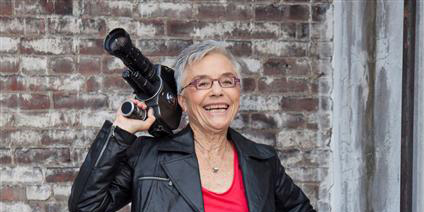[ad_1]
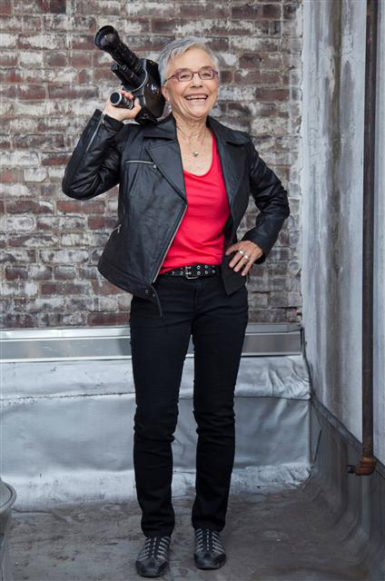
Barbara Hammer.
©SUSAN WIDES
Barbara Hammer, the pioneering experimental filmmaker whose visions of life and love channeled a distinctly lesbian point of view, has died at the age of 79. The cause of death was ovarian cancer, with which she was diagnosed in 2006.
In her final years, Hammer was an outspoken advocate for people’s right to die, an option she hoped for after having exhausted all forms of treatment of her disease. Last October, she performed The Art of Dying or (Palliative Art Making in the Age of Anxiety) at the Whitney Museum in New York, in which she detailed her journey of art-making in times of joy and pain and her desire to die “a dignified death.” Having performed three versions of the piece previously, Hammer considered that to be the final iteration.
“There is a general fear of talking about death in the Western world,” the artist said at the beginning of the lecture. “It is as if by not mentioning and discussing it, it would go away. We do ourselves a disservice to not engage in ruminations of this most powerful life force, for aren’t we alive until our last breath? And isn’t this a rite of passage we wish to address?” As in much of the work she produced in a career covering more than five decades, Hammer addressed that which might seem unaddressable, bringing subject matter often subjugated to the fore.
Hammer’s breakthrough work, Dyketactics (1974), is an experimental film that features more than 100 shots in just over four minutes, with images superimposed on top of one another. She arrived upon her distinct style after she had become bored by the raw footage she produced, later saying she had fallen asleep in the editing room. Produced shortly after she came out as a lesbian and left her marriage—famously by riding away on a motorcycle with a Super-8 camera—Dyketactics depicts a group of nude women in an Edenic forest, their bodies intertwined in the midst of forming a community. Hammer often described the work as a depiction of lesbian sex from a lesbian point-of-view and positioned it as filmmaking about women devoid of the ever-present male gaze.
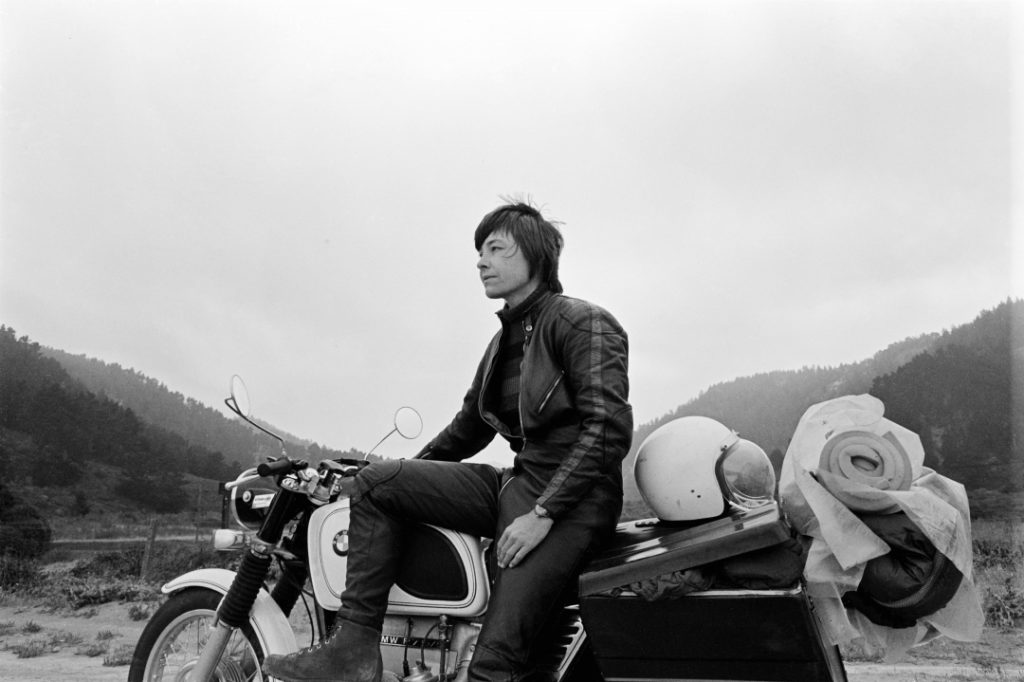
Barbara Hammer, On the Road, Baja California, 1975.
COURTESY THE ARTIST AND COMPANY GALLERY, NEW YORK
Dyketactics was the first of Hammer’s many artistic explorations of the lived realities of lesbians from a queer and female perspective, and it was received as revolutionary. Made at a time when queer experimental filmmaking was still dominated by white men, the work and Hammer’s subsequent films opened up new possibilities for lesbian artists of all kinds. In an unpublished interview with ARTnews in 2018, Hammer said, “I have never separated my sexuality from my art, even if the film has nothing to do with lesbian representation.”
One of the many innovations in Hammer’s ’70s-era films was the connection she made between women’s bodies and their surrounding environments. In Multiple Orgasm (1976), Hammer overlaid footage of rock formations with an extreme close-up of a hand fingering a vagina. As the woman is brought to climax, the editing grows more expressive—fast zooms into crevices cut together quickly, as if the arid landscape was somehow involved in the sexual act. Hammer portrayed bodies as intimately related to the world around them.
Gonzalo Casals, the executive director of the Leslie-Lohman Museum of Gay and Lesbian Art in New York, which presented a Hammer retrospective in 2017, said, “A self-identified badass, Barbara Hammer was a force of nature to be reckoned with. Over the span of her 40-plus-year career, her uncompromising work brought visibility to lesbian and gender issues, aging, and the female body.”
Some of Hammer’s art makes use of viewers’ bodies as well. Her 1982 installation Pond and Waterfall features footage of muddy water to be watched as viewers hold stethoscopes to their hearts. In doing so, the audience creates the film’s soundtrack and, in a sense, becomes one with its moving images.
Hammer’s most recent work has continued this line of inquiry by expanding moving images beyond screens. For an event related to “Dreamlands: Immersive Cinema and Art, 1905–2016,” a survey of expanded cinema at the Whitney Museum in 2016, Hammer performed with projectors mounted to her body, casting images throughout the space. The performance was titled Evidentiary Bodies—a reference, Hammer described in a statement accompanying a later version of the work, to ways that both images and bodies can act as records of happenings in the outer world.
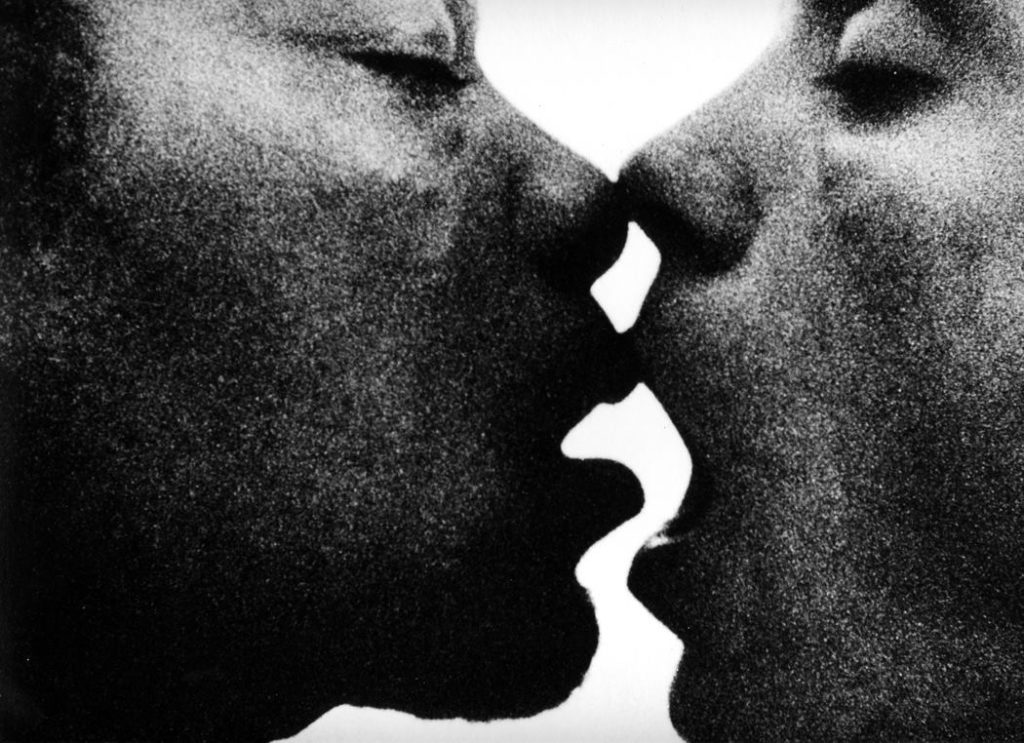
Barbara Hammer, Nitrate Kisses (still), 1992.
COURTESY THE ARTIST
Hammer often worked with an explicitly political dimension to her art. Like many lesbians who lived through the AIDS crisis, Hammer participated in activist happenings during the 1980s and created work responding to the death of millions. She was teaching at Columbia College in Chicago in 1985 when she first learned about the virus. Her 1986 film Snow Job: The Media Hysteria of AIDS was created in the midst of the epidemic, as more and more people died amid seeming indifference from a government and healthcare system too slow to respond to the crisis and ensuing hysteria around HIV/AIDS. The video shows newspaper clippings and TV news broadcasts about the disease, their images set against a background of snow falling. Some of them read: “AIDS-as-leprosy,” “AIDS outcast says hate hurts as much as dying,” “Court Officers Wear Masks and Gloves at Trial of a Defendant With AIDS.”
Hammer’s 1988 film The History of the World According to a Lesbian begins with various body parts—first hands, then legs—moving across an iridescent pink-purple background. A gender-nonconforming quartet sings different renditions of love songs throughout, such as the Monotones’ “Book of Love,” the Dixie Cups’ “Going to the Chapel of Love,” and the Cookies’ “Chains.” The work moves through different sections—“The Platonic Cave,” “Mantra One: The First Memory,” “The Colonial Period”—and highlights different stories of lesbians throughout time, giving voice to a non-linear perspective of the world’s history. (At one point, two masked members of the Guerrilla Girls appear on-screen eating bananas.) The video is typical of the modes through which Hammer sought to upend history as an oppressive structure that discounted the lived stories of women and lesbians in particular. Counter-narratives can lead, Hammer seems to say, to new ways of seeing and truths beyond what the mainstream deems acceptable.
“Barbara Hammer led the battle cry,” said Bradford Nordeen, the founder of the queer art-film nonprofit Dirty Looks. “When you look back at the start of most things queer and experimental, she’s right there, always. She kept on [with] that playful curiosity right through to today, never overlooking what was new or young, beaming with the most generous intensity. Her impact is boundless and her earliest films are just as magnificent, as startling and explicit, as the day they were made.”
Barbara Jean Hammer was born on May 15, 1939, in Hollywood, California. In an oral history published in 2018 by the Smithsonian Archives of American Art, she called her maternal grandmother, a self-taught painter and one-time cook for American actress Lillian Gish, an artistic “role model.” Hammer attended the University of California, Los Angeles, earning a bachelor’s in psychology in 1961. She married her college boyfriend a few days later, and went on to leave him in 1970. Hammer also earned two master’s degrees from San Francisco State University, one in English literature in 1963 and the other in film in 1975.
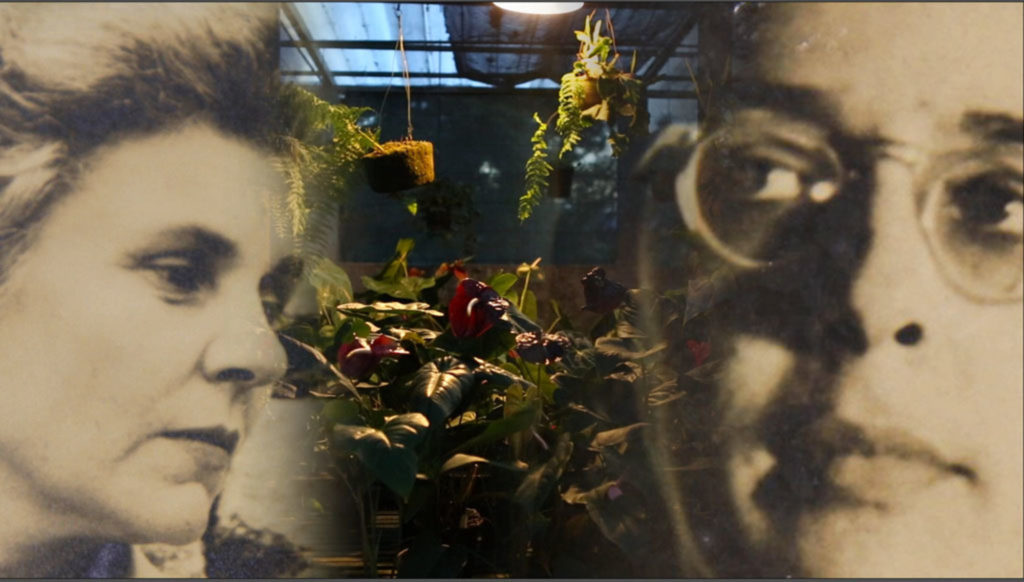
Barbara Hammer, Welcome to This House (still), 2015.
COURTESY THE ARTIST
Critical and curatorial interest for Hammer’s work ebbed and flowed over the years, as it did for many women and queer artists of her generation. Her work was included in the three editions of the Whitney Biennial (in 1985, 1989, and the highly controversial edition in 1993). Her work will also be included in this year’s Whitney Biennial opening in May. Among the museums that have presented retrospectives of her work are the Museum of Modern Art in New York, in 2010, and Tate Modern in London and Jeu de Paume, both 2012. In 2013, she received a Guggenheim Fellowship to continue work on her film, Waking Up Together, about the poet Elizabeth Bishop. This summer, in June, the Wexner Center for the Arts in Columbus, Ohio, will open a solo show of Hammer’s work.
But it was “Evidentiary Bodies,” a 2017 career retrospective at the Leslie-Lohman Museum of Gay and Lesbian Art, that placed her firmly within the canon of queer art. While previous surveys had focused largely on the 80-plus films she created, the exhibition—curated by Staci Bu Shea and Carmel Curtis, and the first for a living lesbian at the museum—contextualized Hammer’s cinematic output with drawings, photographs, and installation work as well as examples of ephemera she collected over the years. (Hammer was fastidious about cataloging her extensive archives, which were acquired in 2017 by the Beinecke Rare Book and Manuscript Library at Yale University.)
“Evidentiary Bodies” oscillated between the serious and the humorous, with appreciation for the ways in which the hardships of life can be combated with a chuckle or a grin. With her 1994 interactive video installation 8 in 8, Hammer invited museumgoers to touch a breast model in order to trigger short video clips, feeling around as if searching for lumps of what could be breast cancer. The videos showed the stories of eight women discussing their experiences with breast cancer. The emotionally moving piece gave women the space to talk about their health, their bodies, and their lives.
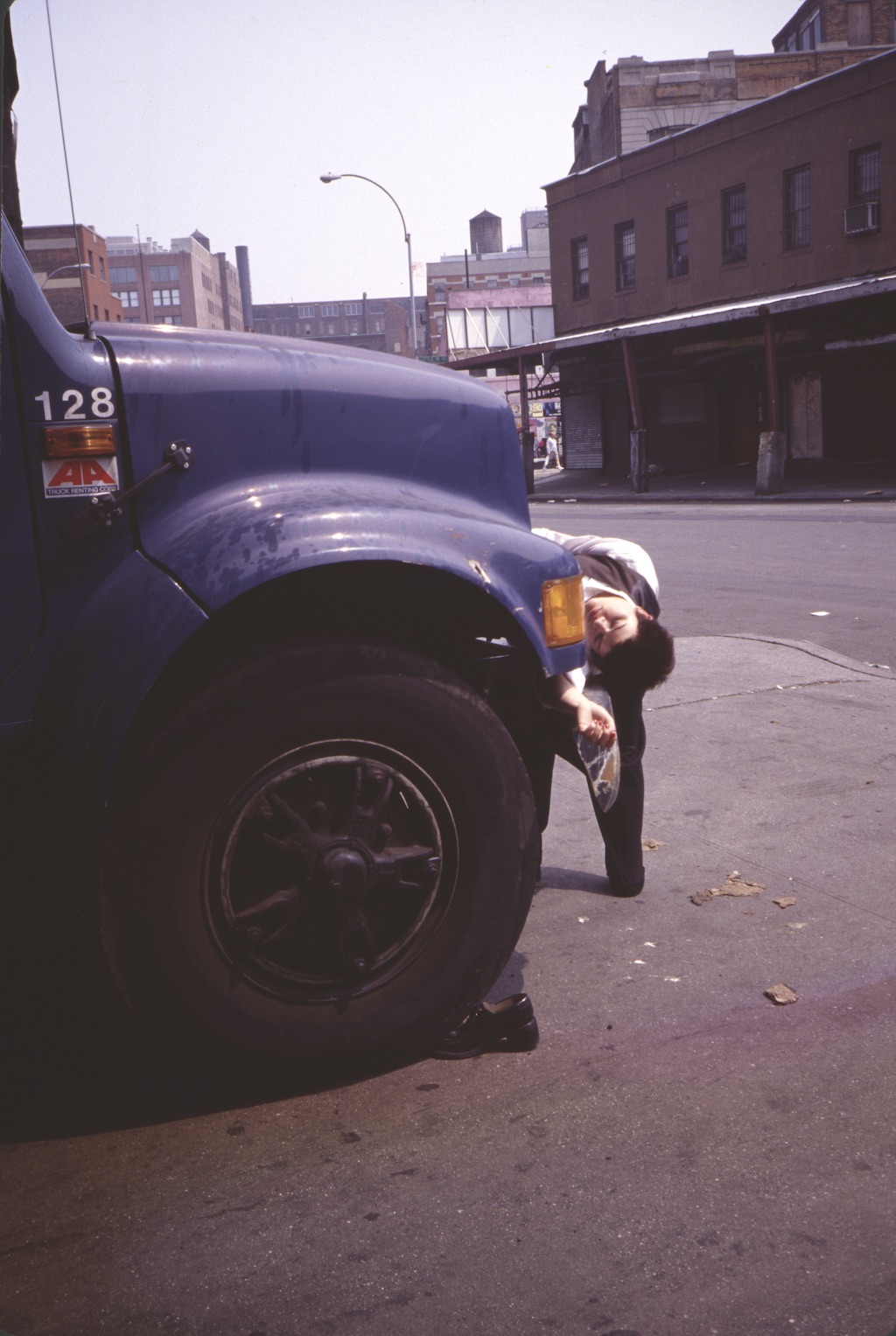
Barbara Hammer, History Lessons (still), 2000.
COURTESY THE ARTIST
Looking back on the Leslie-Lohman retrospective, Hammer wondered how the trajectory of her career might have differed had recognition and support for her come sooner. “I think a lot—well, sometimes—of what my career would look like if the snowball had happened in my mid-30s or early 40s, as it does for most artists,” Hammer told ARTnews last year. “Where I would be today? It would be different: what I could afford, the projects I would have undertaken. Maybe I’d have a warehouse with assistants working for me. Maybe I would have followed through on some experimental, mechanical work that I could find no solution for on my own. There are all kinds of what-ifs.”
Hammer was committed to supporting early career artists, and in 2017 she established—with money she received when Yale acquired her papers—the Barbara Hammer Lesbian Experimental Filmmaking Grant, which is administered by the nonprofit Queer|Art. The annual $5,000 grant was awarded to Fair Brane in 2017 and Miatta Kawinzi in 2018.
“Barbara was a restless advocate for the work of fellow artists and a mentor to many generations of lesbian and queer cultural producers who will continue to be inspired by her work and tenacity for decades to come,” Casals, the Leslie-Lohman director, said.
In a 2017 statement about the creation of the award, Hammer said, “It has been the goal of my life to put a lesbian lifestyle on the screen. Why? Because when I started I couldn’t find any! . . . Working as a lesbian filmmaker in the ’70s wasn’t easy in the social structure . . . and I want this grant to make it easier for lesbians of today.”
[ad_2]
Source link

